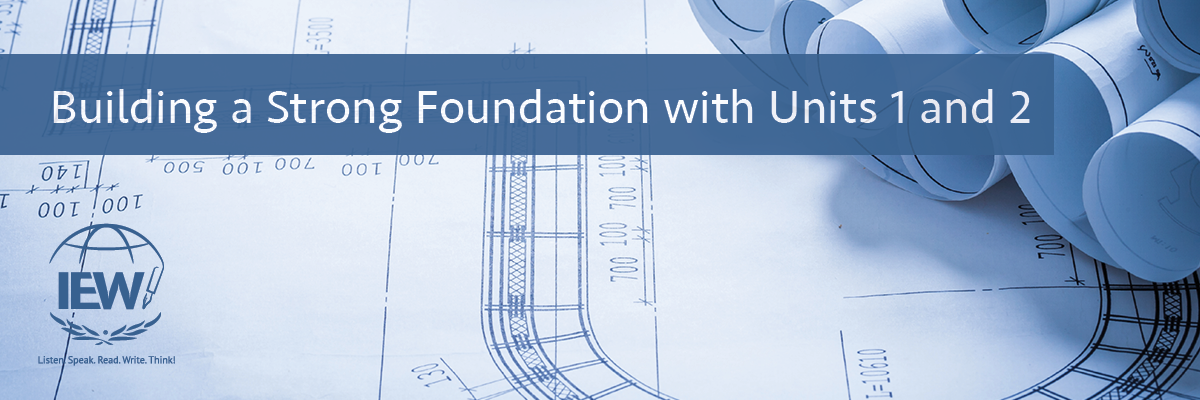
IEW teaches students to write with structure and with style. Style includes vocabulary. Structure is the elements found in compositions. Throughout the year, students progress through nine structural units. Each year they begin with
Units 1 and 2.
Unit 1: Notemaking and Outlines is the cornerstone of all IEW writing units. Unit 2: Writing from Notes builds a foundation for writing on that cornerstone. In any project, a blueprint provides a plan for the structure. IEW teaches students how to plan before they write. That plan is called a key word outline, or KWO. The beauty of the Structure and Style method is that it separates the what-to-write from the how-to-write, and it all begins with Units 1 and 2.
In Unit 1: Notemaking and Outlines, students learn the basics of how to form a KWO and the rules to follow. Instructors and students start with a simple source text included in all the theme-based writing lessons and video courses. Begin by reading the source text together. Choose two or three key words from each sentence. Key words are the most important words that tell the main idea. Circle the words. To write a key word outline (KWO), place the key words on the outline. Do not write more than three words on a line. Students may also use symbols, numbers, and abbreviations. They are “free.” Separate key words, symbols, numbers, and abbreviations with commas. Symbols can be drawn faster than it takes to write the word. Numbers include dates and numerals like 1, 2, 3 and 1st, 2nd, 3rd. Abbreviations are commonly accepted forms of shortened words. This sample source text and KWO is from Adventures in Writing.


Once students complete their key word outlines, they put them to the test by retelling in full sentences. If the students struggle with forming a sentence, go back to the source and try again for words that will be more helpful in expressing the main idea. It is important to develop the habit of testing the key word outline. Testing helps students to hear what a complete sentence sounds like. Testing the outline will also provide experience in public speaking, preparing students to think before they speak. Do not allow your students to skip this important step in the process.
Once students are able to retell their outlines orally, they are ready to move forward. Unit 2: Writing from Notes teaches students how to write a paragraph from the key word outline. Students use the KWO to write a summary paragraph from their notes, turning their notes into complete sentences. One note may become two or more sentences, or two notes may become one sentence. As you model writing from the KWO, stress the importance of writing in your own words but do not worry if their paragraphs are similar to the source texts. This will change when students advance to other units. Don’t get stuck here. These are just the first steps in the process.
Why do we repeat Units 1 and 2 each year? It is tempting for older students to think they have moved beyond this. In truth, you never move beyond a foundation. We review it every year to emphasize that every paper begins with a plan and that plan is the key word outline. The key word outline provides that organization from which to build a solid paragraph. Walking through the steps from developing and testing the key word outline to summarizing it into a paragraph will help develop confident and competent communicators and thinkers.
